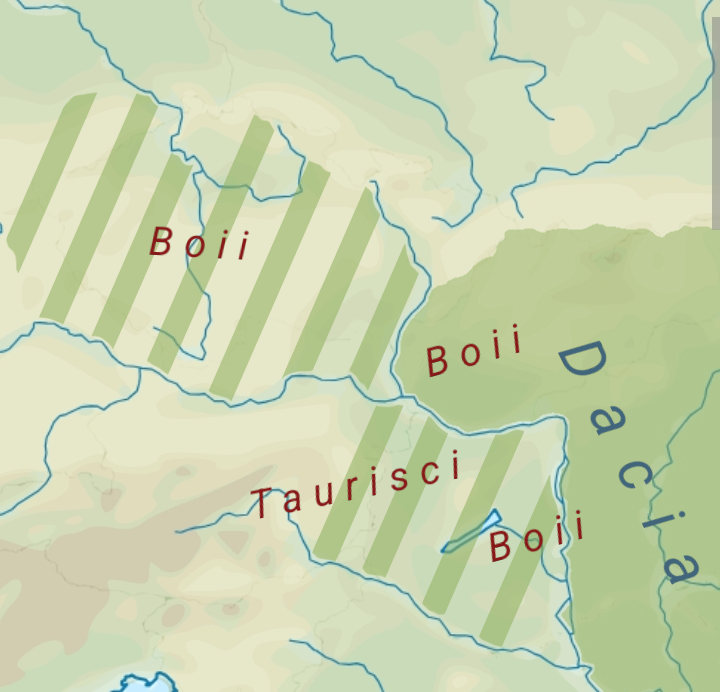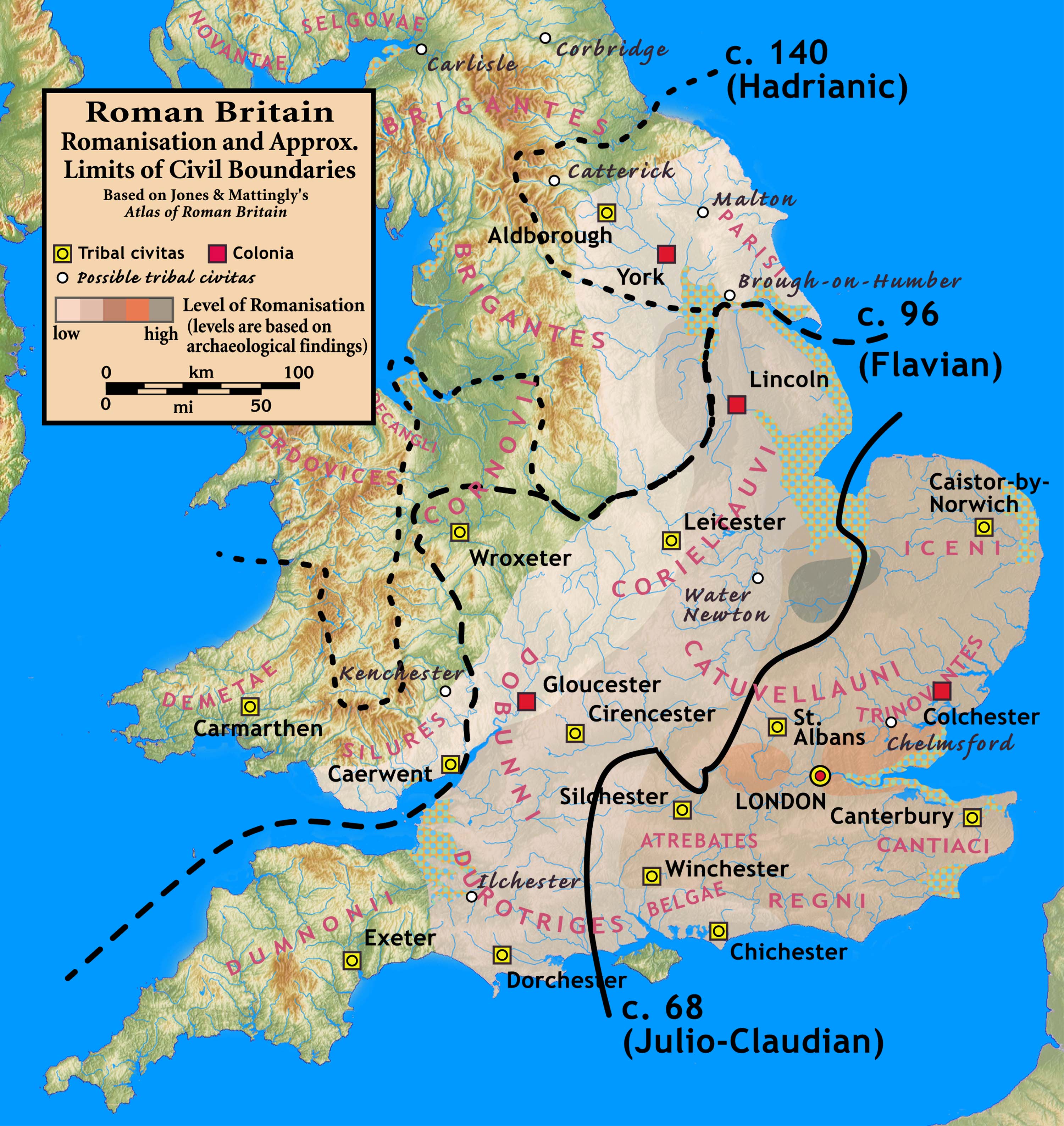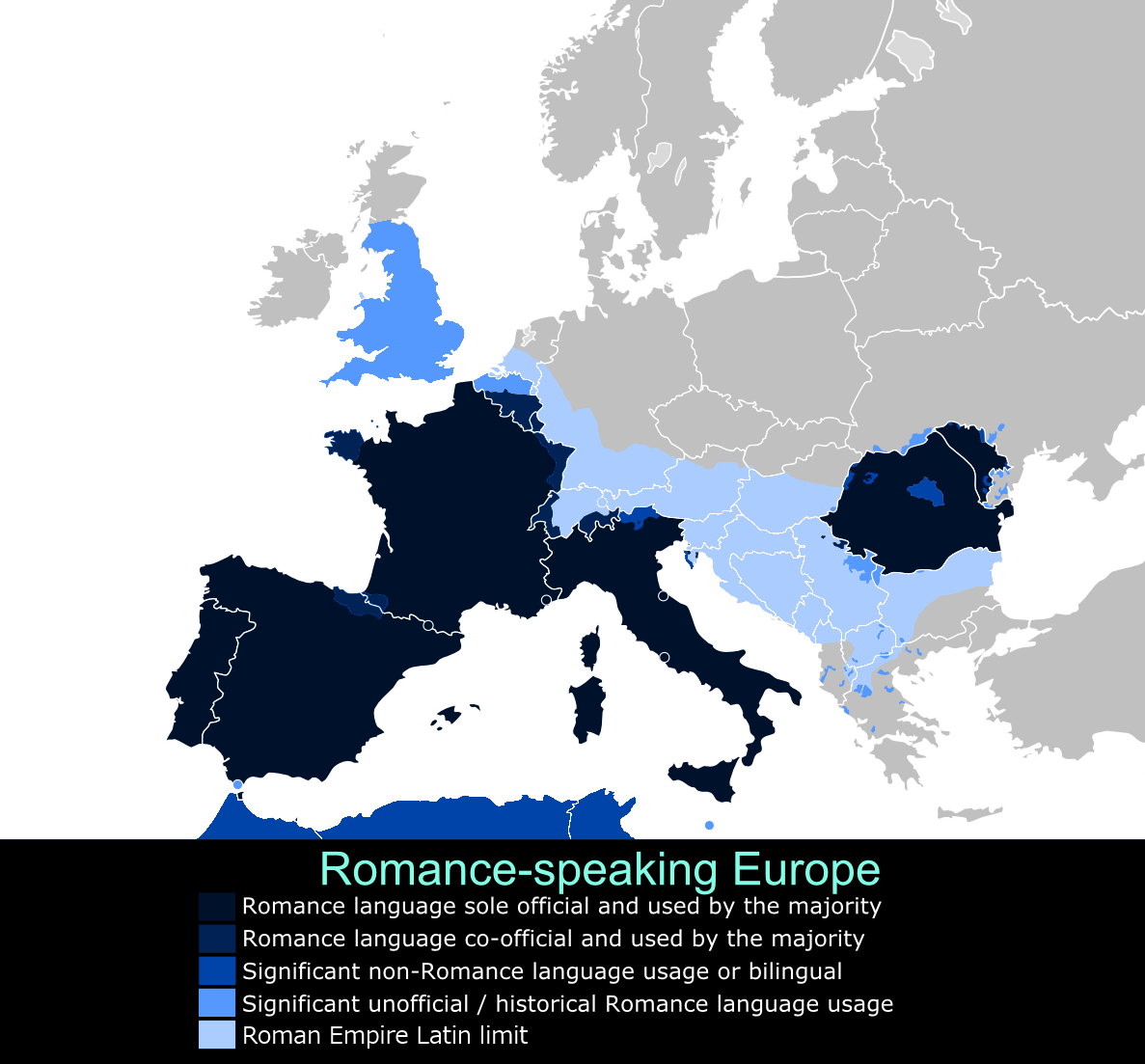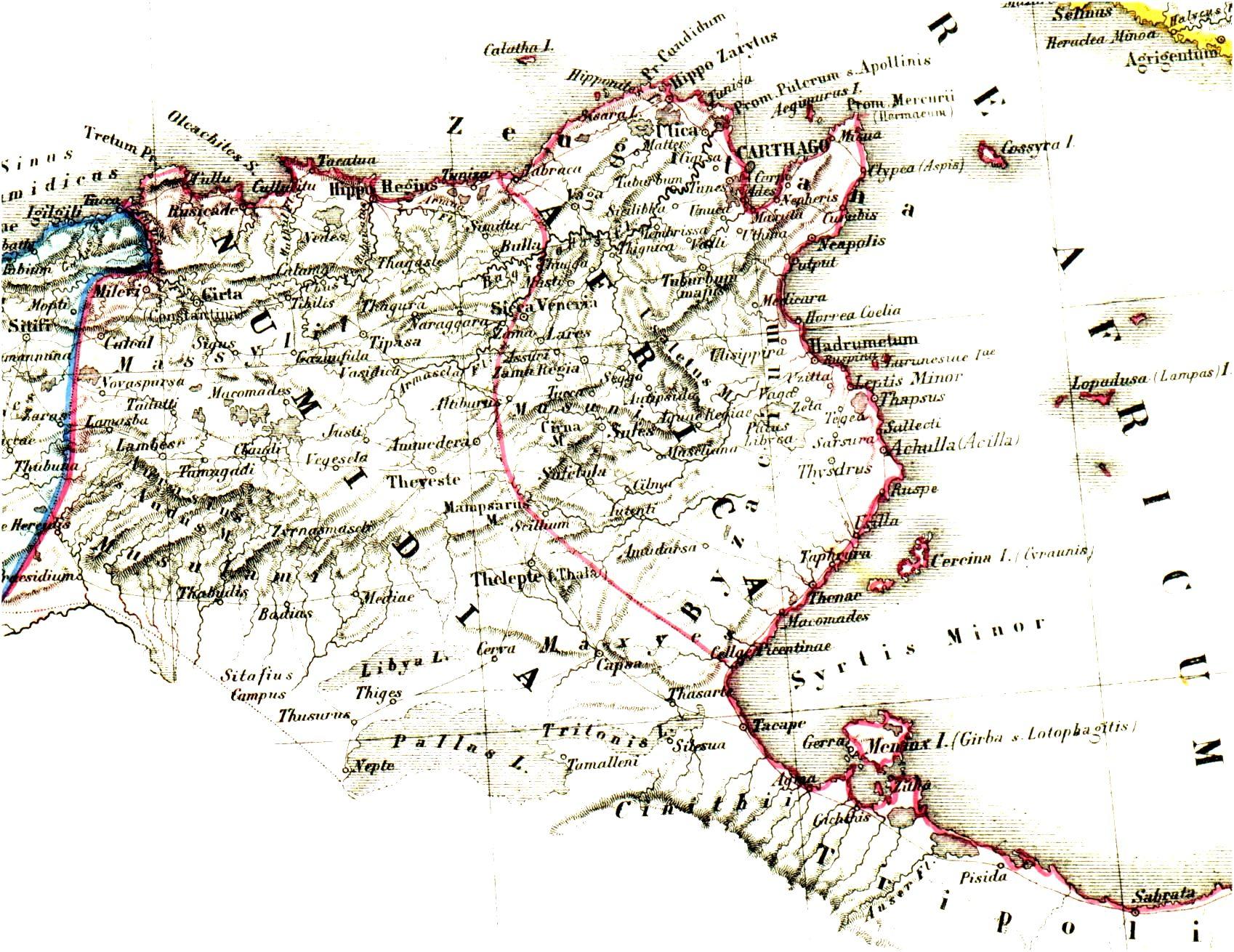|
Pannonian Romance
Pannonian Latin (also known as Pannonian Romance) was a variant of Vulgar Latin that developed in Pannonia, but became extinct after the loss of the province. History Most likely the bigger part of the indigenous population spoke P-Celtic. This was influenced by the neighbouring cultures (eg. Illyrian and Scythian). Unfortunately, the surviving data is not enough to distinguish their tribes' languages. The conquest of the region by the Roman Empire was completed by 9 BC, and the territory integrated into Illyricum. In 10 AD Pannonia was organized as a separate province. In Pannonia the material culture of the native population showed little sign of Romanization in the first 160 years of Roman rule. In the second half of the second century there were major changes in the composition of the population, but the organic continuity of the Latin language development of the area is unbroken. The particularly destructive Marcomannic Wars changed the ethno-linguistic makeup of th ... [...More Info...] [...Related Items...] OR: [Wikipedia] [Google] [Baidu] |
Pannonia
Pannonia (, ) was a Roman province, province of the Roman Empire bounded on the north and east by the Danube, on the west by Noricum and upper Roman Italy, Italy, and on the southward by Dalmatia (Roman province), Dalmatia and upper Moesia. It included the modern regions western Hungary, western Slovakia, eastern Austria, northern Croatia, north-western Serbia, northern Slovenia, and northern Bosnia and Herzegovina. Background In the Early Iron Age, Transdanubia was inhabited by the Pannonians or Pannonii, a collection of Illyrians, Illyrian tribes. The Celts invaded in the Late Iron Age and Gallo-Roman culture, Gallo-Roman historian Pompeius Trogus writes that the Celts were met with heavy resistance from the locals and were not able to overrun the southern part of Transdanubia. Some tribes advanced as far as Delphi, with the Scordisci settling in Syrmia (279 BC) upon being forced to withdraw. The arrival of the Celts in Transdanubia disrupted the flow of amber from the Balti ... [...More Info...] [...Related Items...] OR: [Wikipedia] [Google] [Baidu] |
Germanic Peoples
The Germanic peoples were tribal groups who lived in Northern Europe in Classical antiquity and the Early Middle Ages. In modern scholarship, they typically include not only the Roman-era ''Germani'' who lived in both ''Germania'' and parts of the Roman Empire, but also all Germanic speaking peoples from this era, irrespective of where they lived, most notably the Goths. Another term, ancient Germans, is considered problematic by many scholars since it suggests identity with present-day Germans. Although the first Roman descriptions of ''Germani'' involved tribes west of the Rhine, their homeland of ''Germania'' was portrayed as stretching east of the Rhine, to southern Scandinavia and the Vistula in the east, and to the upper Danube in the south. Other Germanic speakers, such as the Bastarnae and Goths, lived further east in what is now Moldova and Ukraine. The term ''Germani ''is generally only used to refer to historical peoples from the 1st to 4th centuries CE. Different ac ... [...More Info...] [...Related Items...] OR: [Wikipedia] [Google] [Baidu] |
Eötvös Loránd University
Eötvös Loránd University (, ELTE, also known as ''University of Budapest'') is a Hungarian public research university based in Budapest. Founded in 1635, ELTE is one of the largest and most prestigious public higher education institutions in Hungary. The 28,000 students at ELTE are organized into nine faculties, and into research institutes located throughout Budapest and on the scenic banks of the Danube. ELTE is affiliated with 5 Nobel laureates, as well as winners of the Wolf Prize, Fulkerson Prize and Abel Prize, the latest of which was Abel Prize winner László Lovász in 2021. The predecessor of Eötvös Loránd University was founded in 1635 by Cardinal Péter Pázmány in Nagyszombat, Kingdom of Hungary (today Trnava, Slovakia) as a Catholic university for teaching theology and philosophy. In 1770, the university was transferred to Buda. It was named Royal University of Pest until 1873, then University of Budapest until 1921, when it was renamed Royal Hungarian Pá ... [...More Info...] [...Related Items...] OR: [Wikipedia] [Google] [Baidu] |
Dialects Of Latin
Throughout History of Rome, Roman history, there was regional variation in the Latin, Latin language. In certain regions, terms or morphological features from pre-Roman substrate languages were borrowed into the local dialects. For instance, the dialect of Roman Gaul, Gaul borrowed terms from their native Gaulish, Gaulish language, which was spoken by the Gauls, a Celts, Celtic people. Regional dialects were often perceived as inferior to the prestige "Roman" dialect, which—in the view of some authors—may have constituted a genuine style of speech common to the city of Rome. However, other authors perceived their ideal "Roman dialect" as an artificial, prescribed standard of "correct" speech that did not necessarily reflect the vernacular of any given region. Gaulish Influence of substrate languages There are numerous inscriptions from Gaul written in a mixed dialect of Latin and Gaulish, with both languages borrowing heavily from the other. One inscription from Autun re ... [...More Info...] [...Related Items...] OR: [Wikipedia] [Google] [Baidu] |
British Latin
British Latin or British Vulgar Latin was the Vulgar Latin spoken in Great Britain in the Roman and sub-Roman periods. While Britain formed part of the Roman Empire, Latin became the principal language of the elite and in the urban areas of the more romanised south and east of the island. In the less romanised north and west it never substantially replaced the Brittonic language of the indigenous Britons. In recent years, scholars have debated the extent to which British Latin was distinguishable from its continental counterparts, which developed into the Romance languages. After the end of Roman rule, Latin was displaced as a spoken language by Old English in most of what became England during the Anglo-Saxon settlement of the fifth and sixth centuries. It survived in the remaining Celtic regions of western Britain. However, it also died out in those regions by about 700; it was replaced by the local Brittonic languages. Background At the inception of Roman rule in AD& ... [...More Info...] [...Related Items...] OR: [Wikipedia] [Google] [Baidu] |
Moselle Romance
Moselle Romance (; ) is an extinct Gallo-Romance languages, Gallo-Romance (most probably Langue d'oïl) dialect that developed after the fall of the Roman Empire along the Moselle river in modern-day Germany, near the border with France. It was part of a wider group of Romance relic areas within the German-speaking territory. Despite heavy Germanic influence, it persisted in isolated pockets until at least the 11th century. Historical background After Julius Caesar conquered Gaul in 50 BC, a Gallo-Roman culture gradually developed in what is today France, southern Belgium, Luxembourg, and the region between Trier and Koblenz. By contrast, the adjacent province of Germania Inferior and part of Germania Superior retained a Germanic character throughout the Imperial period. Emergence According to linguist Alberto Varvaro the linguistic frontier between German and Latin populations around the 13th century was similar to the present language frontier, but only a few years befor ... [...More Info...] [...Related Items...] OR: [Wikipedia] [Google] [Baidu] |
African Romance
African Romance, African Latin or Afroromance is an extinct Romance languages, Romance language that was spoken in the various provinces of Africa (Roman province), Roman Africa by the African Romans under the later Roman Empire and its various post-Roman successor states in the region, including the Vandal Kingdom, the Byzantine Empire, Byzantine-administered Exarchate of Africa and the Berbers, Berber Mauro-Roman Kingdom. African Romance is poorly attested as it was mainly a Spoken language, spoken, vernacular language''.'' There is little doubt, however, that by the early 3rd century AD, some native provincial variety of Latin was fully established in Africa.' After the Muslim conquest of the Maghreb, conquest of North Africa by the Umayyad Caliphate in 709 AD, this language survived through to the 12th century in various places along the North African coast and the immediate littoral,' with evidence that it may have persisted up to the 14th century,' and possibly even the 15 ... [...More Info...] [...Related Items...] OR: [Wikipedia] [Google] [Baidu] |
Monograph
A monograph is generally a long-form work on one (usually scholarly) subject, or one aspect of a subject, typically created by a single author or artist (or, sometimes, by two or more authors). Traditionally it is in written form and published as a book, but it may be an artwork, audiovisual work, or exhibition made up of visual artworks. In library cataloguing, the word has a specific and broader meaning, while in the United States, the Food and Drug Administration uses the term to mean a set of published standards. Written works Academic works The English term ''monograph'' is derived from modern Latin , which has its root in Greek. In the English word, ''mono-'' means and ''-graph'' means . Unlike a textbook, which surveys the state of knowledge in a field, the main purpose of a monograph is to present primary research and original scholarship. This research is presented at length, distinguishing a monograph from an article. For these reasons, publication of a monograph ... [...More Info...] [...Related Items...] OR: [Wikipedia] [Google] [Baidu] |
Corpus Inscriptionum Latinarum
The ''Corpus Inscriptionum Latinarum'' (''CIL'') is a comprehensive collection of ancient Latin inscriptions. It forms an authoritative source for documenting the surviving epigraphy of classical antiquity. Public and personal inscriptions throw light on all aspects of Roman life and history. The ''Corpus'' continues to be updated in new editions and supplements. CIL also refers to the organization within the Berlin-Brandenburg Academy of Sciences and Humanities responsible for collecting data on and publishing the Latin inscriptions. It was founded in 1853 by Theodor Mommsen and is the first and major organization aiming at a comprehensive survey. Aim The ''CIL'' collects all Latin inscriptions from the whole territory of the Roman Empire, ordering them geographically and systematically. The earlier volumes collected and published authoritative versions of all inscriptions known at the time—most of these had been previously published in a wide range of publications. The desc ... [...More Info...] [...Related Items...] OR: [Wikipedia] [Google] [Baidu] |
Lombards
The Lombards () or Longobards () were a Germanic peoples, Germanic people who conquered most of the Italian Peninsula between 568 and 774. The medieval Lombard historian Paul the Deacon wrote in the ''History of the Lombards'' (written between 787 and 796) that the Lombards descended from a small tribe called the Winnili,: "From Proto-Germanic language, Proto-Germanic ''wikt:Reconstruction:Proto-Germanic/winnaną, winna-'', meaning "to fight, win" who dwelt in northern Germany before migrating to seek new lands. Earlier Roman-era historians wrote of the Lombards in the first century AD as being one of the Suebian peoples, also from what is now northern Germany, near the Elbe river. They migrated south, and by the end of the fifth century, the Lombards had moved into the area roughly coinciding with modern Austria and Slovakia north of the Danube. Here they subdued the Heruls and later fought frequent wars with the Gepids. The Lombard king Audoin defeated the Gepid leader Thuris ... [...More Info...] [...Related Items...] OR: [Wikipedia] [Google] [Baidu] |
Dalmatia
Dalmatia (; ; ) is a historical region located in modern-day Croatia and Montenegro, on the eastern shore of the Adriatic Sea. Through time it formed part of several historical states, most notably the Roman Empire, the Kingdom of Croatia (925–1102), Kingdom of Croatia, the Republic of Venice, the Austrian Empire, and presently the Croatia, Republic of Croatia. Dalmatia is a narrow belt stretching from the island of Rab (island), Rab in the north to the Bay of Kotor in the south. The Dalmatian Hinterland ranges in width from fifty kilometres in the north, to just a few kilometres in the south; it is mostly covered by the rugged Dinaric Alps. List of islands of Croatia, Seventy-nine islands (and about 500 islets) run parallel to the coast, the largest (in Dalmatia) being Brač, Pag (island), Pag, and Hvar. The largest city is Split, Croatia, Split, followed by Zadar, Šibenik, and Dubrovnik. The name of the region stems from an Illyrians, Illyrian tribe called the Dalmatae, w ... [...More Info...] [...Related Items...] OR: [Wikipedia] [Google] [Baidu] |






